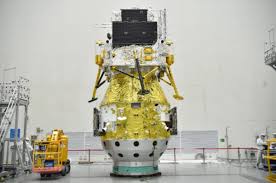New Delhi:China Moon Mission: China’s spacecraft Chang’e-6 returned on Tuesday with samples from the far facet of the Moon, which might by no means be seen from Earth. That is the primary spacecraft to finish such a mission.
The lander landed on the floor of the Moon on June 1. Utilizing a robotic arm and drill, it collected samples of rock and soil from the 2500-km-wide South Pole-Aitken (SPA) basin, one of many oldest and largest Moon craters. It spent two days there.
After the samples had been collected, the lander launched an ascent module. It transferred the samples to the Chang’e-6 orbiter orbiting the Moon. The orbiter launched a service module on June 21 that introduced the samples again to Earth.
Rocks and soil had been introduced within the Apollo 11 mission
It’s not that no spacecraft has introduced moon samples to Earth earlier than this. In July 1969, America’s Apollo 11 mission introduced 22 kilograms of fabric together with 50 rocks from the floor of the moon to Earth. In September 1970, Russia’s Soviet Luna 16 mission, which was the primary robotic mission, additionally introduced samples from the moon to Earth.
In recent times, earlier than Chang’e-6, in December 2020, Chang’e-5 mission introduced two kilograms of soil from the moon, though these samples had been introduced from the a part of the moon close to the Earth. The a part of the moon that by no means is available in entrance of the Earth is kind of inaccessible. There are big craters in that half and resulting from issue in communication with floor management, touchdown a spacecraft there’s technically very difficult. We will see just one a part of the moon.

China achieved a serious achievement
Chang’e-4 overcame these difficulties in 2019 and landed the Yutu-2 rover on the far floor of the moon. Now Chang’e-6 has not solely landed in a distant space, however has additionally returned with samples from there. It is a main achievement of China.
India’s Chandrayaan-4 mission, which the Indian Area Analysis Group (ISRO) is getting ready for, may even be a pattern return mission. Chandrayaan-3 landed about 600 kilometers from the south pole of the Moon.
Why are the 2 elements of the Moon so completely different from one another?
The far facet of the Moon is geologically completely different from the close to facet. It has a thicker crust, extra craters and fewer plains. Lava used to stream there as soon as. Scientists haven’t but been capable of finding out why these two elements of the Moon are so completely different from one another. Some solutions to this are prone to be discovered by analyzing the samples introduced in Chang’e-6.
Samples collected from the SPA basin may hint the timeline of lunar cratering. Examination of the samples can present details about the historical past of the moon and probably its origin.

Chance of ice being current on the poles of the moon
The samples introduced may counsel methods to make use of lunar sources for future lunar and house exploration. Ice is prone to be current on the poles of the moon. Scientists are additionally on this. Water, oxygen and hydrogen may be obtained from ice. Oxygen and hydrogen can be utilized in rocket propellant.
India, China, Japan, the US and Russia have launched lunar missions within the yr 2023. In line with the European Area Company, greater than 100 lunar missions are anticipated to be launched by governments and personal corporations by the yr 2030.
Astronauts’ path to the moon
International locations like China and the US need to ship astronauts to the moon by 2030. The success of Chang’e-6 is seen as an essential step by China in direction of reaching this purpose.








